
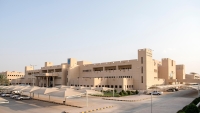
Sheikh Mohammed Bin Hussein al-Amoudi Chair for Water Research is a scientific research chair established at King Saud University (KSU) in 2008. It aims to provide an innovative research environment that adopts a methodologically grounded scientific approach while supporting invention, innovation, and creativity in water-related fields, aligning with the university’s strategic direction. 1 Objectives of the chair Sheikh Mohammed Bin Hussein al-Amoudi Chair for Water Research aims to conduct s...
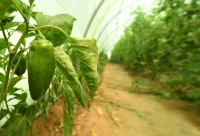
The Saudi Organic Food Day is celebrated on November 11 each year, upon approval of its name by the Council of Ministers in 2022, according to a telegram sent to the council by the Minister of Environment, Water, and Agriculture on the suggestion of an organic food day. 1 2 The word 'organic' refers to the method used by farmers to plant and process agricultural products, including fruits, vegetables, grains, dairy, and meat. Organic agriculture practices have been designed to enhance...

Aseer National Park extends over an area of 4,500 km 2 . It is located at as-Sudah Center, in Aseer Province , in the Kingdom of Saudi Arabia . It was established to benefit from the green spaces to rehabilitate the province's wildlife. The number of wildlife species there reached about three hundred species, housing rare plants and endangered species of birds and animals, such as the endangered Arabian tigers that live in the province's high hills, although they are rarely seen, and ...
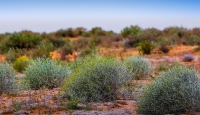
Rhanterium epapposum, Asteraceae (commonly known as Arfaj ) is a short, round-shaped, and regular shrub that belongs to the Asteraceae family. It is found in Riyadh City , Kingdom of Saudi Arabia. It is known for its quick adaptation to desert conditions. It serves as a food for camels. Its native habitat is the Arabian Peninsula, Kuwait, and tropical regions. Characteristics of the rhanterium epapposum The growth phenomenon of the rhanterium epapposum is a regular one. It grows to a height b...

Al-Hasawi Lime , also known as ' al-Lumi al-Hasawi, ' ' al-Qatif Lime ,' and ' al- Ban Zahiri ,' is widely cultivated in al-Ahsa Oasis in the Eastern Province of the Kingdom of Saudi Arabia . It is the second most significant agricultural product in al-Ahsa after dates . The governorate organizes an annual festival dedicated to the production, harvesting, and marketing of al-Hasawi Lime. Al-Hasawi lime production in al-Ahsa Al-Ahsa Governorate is home to approximat...
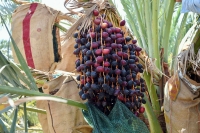
The number of Ajwa Date palms in the Kingdom of Saudi Arabia reaches approximately eight hundred thousand palm trees, and their cultivation is renowned in Al-Madinah Al-Munawwarah Province . Statistics from the Ministry of Environment, Water, and Agriculture 's branch in Al-Madinah Al-Munawwarah Province revealed that the total date production in Al-Madinah Al-Munawwarah Province during 2023 reached 97.9 million kg, with a value exceeding SAR948 million. Ajwa and Sukkari dates led the prod...
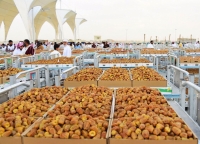
Al-Munifi Dates are a local date variety first cultivated in Riyadh City , in the central region of the Kingdom of Saudi Arabia . They ripen in late September and are among the most sought-after date varieties in Saudi Arabia. Al-Munifi dates palms Al-Munifi dates are harvested from a palm tree bearing the same name. While successfully cultivated in Qassim Province , the tree's yield remains low, producing no more than seventy kg of dates per year. Description of al-Munifi dates Al-Munifi ...
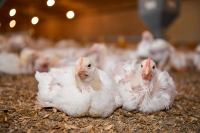
Broilers and Layers in the Kingdom of Saudi Arabia are chickens raised to produce white meat or shell eggs. They are raised within the framework of projects for fattening broilers and producing shell eggs. The Agricultural Development Fund in Saudi Arabia provides loans to individuals and companies to encourage these projects. Broilers and layers farming in Saudi Arabia Saudi Arabia witnessed advancement in poultry farming. Such development is due to scientific progress and research in this fie...
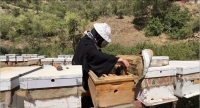
Beekeeping in the Kingdom of Saudi Arabia is a concept that refers to the care of bees and honey production in Saudi Arabia within dedicated colonies. It is typically made of wood and is known as beehives or apiaries. The person who practices beekeeping is called ' Al-Nahhal' (beekeeper). One type of bee is the honey bee, which belongs to the genus 'Apis.' It produces honey and other food products, such as beeswax and pollen used for crop pollination. Production volume of ho...
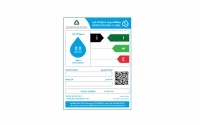
It is a label issued by the Saudi Standards, Metrology, and Quality Organization in collaboration with the National Water Efficiency and Conservation Center (MAEE) to indicate the water-saving rate for all products included in the list of sanitary wares. The organization aims to raise consumer awareness through the issuance of the Water Efficiency Label and encourage them to purchase sanitary products that include the water consumption efficiency label. The label contains several criteria that ...
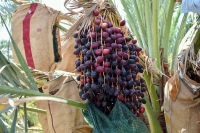
Ajwa Dates are a variety of dates cultivated in al-Madinah al-Munawwarah Province , west of the Kingdom of Saudi Arabia. They are mentioned in the hadiths of Prophet Muhammad, peace be upon him (PBUH), as a blessed fruit with healing properties. These dates are classified as monosaccharide dates, containing glucose and fructose, and are known for their high nutritional value. Stages of Ajwa date ripening Ajwa dates transition to al-Khalal ( al-Bisr /unripe) stage in the second half of June, the...